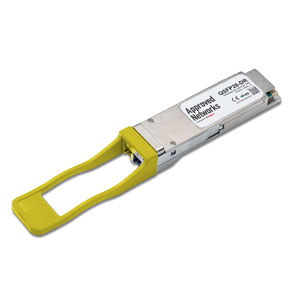What will my capacity look like in 2 to 5 years for 100G circuits?
Posted by Larry Legg on Apr 18, 2022

Learning with Larry
This is the first of an ongoing series with Larry Legg, Approved Networks Sr. Product Design Engineer.
What will my capacity look like in 2 to 5 years for 100G circuits?
Larry:
If you’re anything like me, you look forward to holidays, vacations, maintenance moratoriums . . . all the things Network Engineers love.
Then, it happens! The numbers change!
What numbers? You were all set for an end-of-year slow down, and then it shifts. Maybe it’s the Accounting Department saying you have CapEx (capital expenditure) you need to spend before the end of the year because another part of the company could not spend theirs due to something like chip shortages. Or maybe it’s a Traffic Engineer saying a critical link is over the committed information rate on a regular basis.
So then, all that network engineering, budgeting and planning you put together is negated and you must shoot from the hip for the next network expansion. I’ve watched this happened repeatedly as a Network Engineer every year. December began challenging your plan.
Leadership asks: “How do we prevent this from happening next year?”
All you can think about is “Will I actually get to take my time off THIS year?”
What do you do as a Network Engineer/Architect/Wizard to maintain the growth of 100’s of gigabits required to keep your customers happy and your company healthy?
Well, you can take a forecasting approach and see what Sales has in their crystal ball. You could look at it from a mathematical approach and apply Nielsen’s Law of Internet Bandwidth [ https://www.nngroup.com/articles/law-of-bandwidth] or Edholm’s Law of Telecommunications [https://en.wikipedia.org/wiki/Edholm's_law]. If you have the resources, you can look at past bandwidth growth and utilization, throw it in a spreadsheet and hit the forecast formula. Or you could apply Larry’s Law (a new rule I just came up with) . . . “Take your network size, double it, and add 10%.”
Now you have arrived at the number of 100G circuits you need for next year. And you must source equipment, power, HVAC, rack/floorspace, and . . . oh no . . . additional fibers to support the additional bandwidth needs.
But wait! Your dark fiber provider started their vacation last week and you don’t have enough budget for more fiber in your OPEX budget!
You start down the path of BiDi optics to save yourself some fiber. You hear an echo in your head: “How do we prevent this from happening next year?”
BiDi’s are now just a Band-Aid on your hemorrhaging network and will only stop the bleeding for a short time – like the next quarter. Then your engineering mind says that phrase that keeps us engineers engaged in minimal REM sleep:
“There has got to be a better way!”
“How do I avoid leasing more fiber?”
“How do I get off the treadmill of this budgeting/bandwidth exercise for the next 2 to 5 years?”
There are a few solutions that move you out of amateur BiDi status and get you into Expert Engineer level. When you are dealing with 100’s of gigabits there are DWDM solutions that allow you to “pay-as-you-grow” without the expense of ROADM Systems.
Passive DWDM systems allow you to tailor your network from 8 to 40 100G links and do not require a lot of CapEx to get started. As your distances increase you may want to look at an Open Line System (OLS) that is fully automated for easy turn-ups. (Sometime these OLS systems are referred to as “DCI” or Data Center Interconnects.)
These solutions allow you to take your existing links on currently leased dark fiber and increase the growth potential from a singe 100G, or even 400G on a pair of fibers, up to 4TB. You can start with just one or two 100G’s and grow into them over the coming years. You will look like a pro to your leadership, a hero to the accounting team, a trusted provider to your customers . . . and maybe even get to take that PTO that doesn’t roll over to the next year!
About Larry . . .
Larry Legg is a Sr. Product Design Engineer at Approved Networks, a brand of Legrand. With a proven ability to implement network strategies supporting both business and financial objectives, Larry has led projects that resulted in reduced customer down-time and increased network efficiencies. Recognized as an expert in the telecommunications field, Larry has over 30 years of key decision making and on-hand experience.


